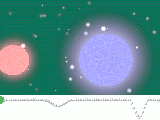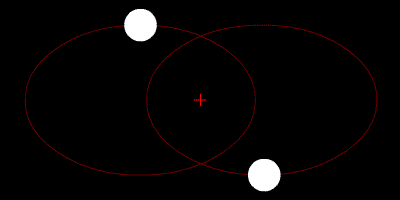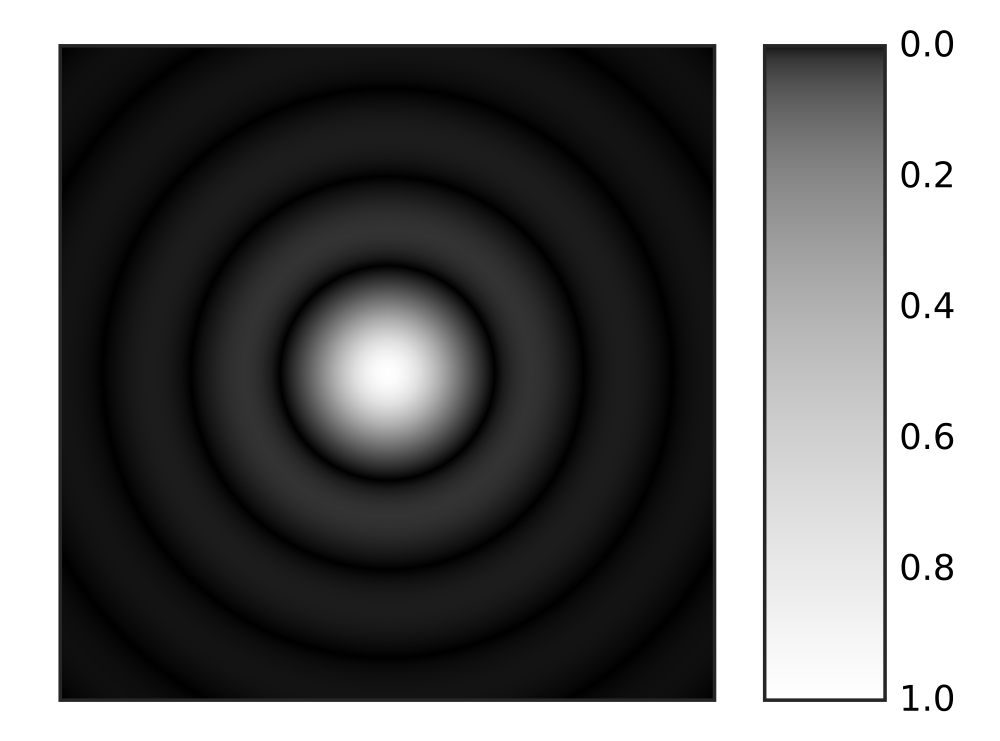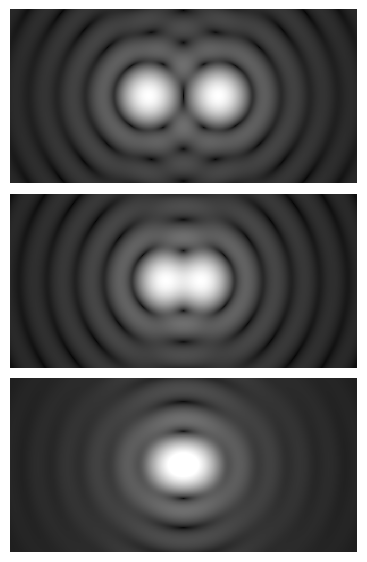
Supplementary Lab Preparation: The items are often alternatives to the required preparation.
The quiz might be omitted if it's not feasible or convenient. The students may or may not be informed ahead of time of quiz omission depending on the circumstances.
The quizzes in total are 40 % of the course grade. However, only the top five quiz marks are counted.

Caption: St. Nestor the Chronicler (c. 1056--c. 1114), St. Vladimir's Cathedral, Kiev, Ukraine.
At his studies.
Credit/Permission: Viktor Vasnetsov (1848--1926), 1919 (uploaded to Wikipedia by User:Butko, 2006) / Public domain.
Image linked to Wikipedia.
In preparing for a quiz, go over the Required Lab Preparation.
The Supplementary Lab Preparation (see above) could help, but is only suggested if you feel you need more than the required Required Lab Preparation.
There is no end to the studying you can do, but it is only a short quiz.
One to two hours prep should suffice.
There will be 10 or so questions and the time will be 10 or so minutes.
The questions will range from quite easy to challenging.
The solutions might be posted at Double Stars: Quiz Solutions after the quiz is given. Whether they are or not depends on the circumstances of each individual semester.

Caption: Plato (428/427--348/347 BCE) and Socrates (circa 469--399 BCE) in a Medieval image.
Here the disciple seems to be instructing the master/mentor using the Socratic method.
The basic pose is much like in intro labs.
Credit/Permission: Medieval artist, Middle Ages (probably 1000--1400) (uploaded to Wikipedia by User:Tomisti, 2007) / Public domain.
Image linked to Wikipedia.
The outside part is a good observing lab, and so may be a good warm-up for the lab final.
But if you leave it to the last week, the weather could eliminate it.
You may need to locate for yourself some of the more obscure double stars so that you can point them out to students.
For review, see Telescope Operating Procedure and List of Tricks for C8 Telescopes for procedures and tips.
You will have to coordinate with other instructors about time on the C8's for your section.
You should set the List of Tricks for C8 Telescopes for the students.
Or you can just print out the following sky map updated for your approximate observing time (usually about 9 pm local time) and give one to each group.
They can then use the current time sky map below with the field adjusted to find and label on their copy of the sky map the double stars they will try to observe.

Caption: "Red foxes (Vulpes vulpes) at the British Wildlife Centre, Horne, Surrey, England." (Slightly edited.)
Credit/Permission: © Keven Law, 2008 Aug17 / Creative Commons CC BY-SA 2.0.
Image linked to Wikipedia.
A double star is any pair of stars that appear close together in a telescope.
Sometimes a double star is just an optical double: two stars that are close together in angle, but are far apart in space and are NOT gravitationally bound to each other.
A binary is a two-star multiple star system which is a gravitationally bound system of stars.
The animation below illustrates two astro-bodies (e.g., two stars) in a gravitationally bound system.
Binaries, I think, usually have more circular orbits than the astro-bodies in the animation.

Caption: "An animation of two astro-bodies with the same mass orbiting around their common center of mass (red cross) with elliptical orbits." (Slightly edited.)
The periapsis (AKA pericenter) is the arrangement of closest separation and the term is also used for the closest separation distance.
The apoapsis (AKA apocenter) is the arrangement of farthest separation and the term is also used for the farthest separation distance.
The apse line (AKA line of apsides is drawn through the periapsis and apoapsis.
The relative mean orbital radius (AKA relative semi-major axis) is given by
a=(1/2)*( r_periapsis + r_apoapsis ),
where r_periapsis is the periapsis separation
and r_apoapsis is the apoapsis separation.
Credit/Permission: User:Zhatt, before or circa 2005 (uploaded to Wikipedia by User:Julo, 2005) / Public domain.
Image linked to Wikipedia.
Multiple star systems are very common.
It is estimated that about 1/3 of all star systems in the Milky Way are multiple star systems (Wikipedia: Binary star: Research findings).
The other star systems are isolated stars.
So of order 1/2 of all stars are in multiple star systems most of which are binaries.
Noticeable close optical doubles are rare by comparison.
In this lab, were principally concerned with double stars, but some higher number multiple star systems can turn up.
There is a common classification of binaries based on their observational or apparent properties, NOT based on their intrinsic properties:
Of course, one telescope's visual binary is another's non-visual binary.
So the class of visual binaries is observation dependent.
However, those visual binaries that can be resolved by a small telescope under average seeing are always visual binaries.
The spectra will be a combination of both stars, and so will have, roughly speaking a double set of spectral lines.
Because the stars are orbiting their common center of mass, they will have different time-varying radial velocities (i.e., line-of-sight velocities), and thus have different time-varying Doppler shifts.
Spectroscopic binaries are easy to detect as long as the binary is close enough (and therefore has high enough apparent brightness) for a good spectrum of at least one of the binary companions to be well observed.
Another requirement is that the orbital inclination (for exo-systems) be large enough (i.e., the orbital plane must be far enough from face-on).
A face-on binary would have zero radial velocities, and so would be undetectable as spectroscopic binary from the Doppler shifts.
It might be detected from other clues in the spectrum.
There would be one eclipse of each star in each orbital period.
To be an eclipsing binary, the orbital inclination (for exo-systems) has to be close enough to 90 degrees (i.e., the orbital plane must be close enough to edge-on).
Eclipsing binaries can be eclipse dips in their detected from light curves (i.e., the luminosity as a function of time).
The animation below illustrates an eclipsing binary and its light curve.

Caption: An animation of a very close eclipsing binary with the system's light curve in the lower panel.
Eclipsing binaries are only eclipsing relative to an observer on Earth if the orbit of the binary is seen nearly edge-on (i.e., at an inclination relative to the line of sight of nearly 90 degrees).
Eclipsing binaries are very useful because in many cases because stellar parameters can be determined from them relatively straightforwardly.
In particular, mass can be relatively easily determined for eclipsing binaries.
The light curve shows dips where one or other of the binary companions eclipses the other.
Eclipsing binaries can be detected even though in most cases they are NOT resolved.
The varying Doppler shift of their spectral lines proves a system is a binary and the dips prove a system is an eclipsing binary.
Credit/Permission: User:Stanlekub, 2005 / Public domain.
Animation linked to Wikipedia.
Binaries are either wide binaries or close binaries.
The two classes are not cleanly separated and their meanings vary somewhat depending on context.
Usually, wide binaries are those systems where binary pairs interact significantly only through gravity.
Usually, close binaries are those systems where binary pairs interact significantly electromagnetic radiation (EMR) or electromagnetic radiation (EMR) and mass transfer as well as by gravity.
In the case of mass transfer, the binary is usually called an interacting binary.
Mass transfer usually only happens at certain periods of lifetime of a binary: usually when one of the stars is in a red giant phase.
Of course, very close close binaries might undergo mass transfer throughout their lifetimes.
The stellar evolution of close binaries can be quite different from that of isolated stars or wide binaries (where the binary pairs evolve nearly like isolated stars).
The stars in the animation above in a close binary becase they are so close in comparison to their radii. They will probably undergo mass transfer at some epoch.
Angular resolution is discussed in caption to the figure below.

Caption: A simulated Airy diffraction pattern with intensity in grayscale.
An Airy diffraction pattern is the diffraction pattern of a plane waves impinging on a circular aperature that is parallel to the wave fronts.
The source in most astronomical application is a light point source at optical infinity.
It is only readily noticeable when light wavelength λ is comparable or greater than the aperature diameter D.
As λ grows smaller than D, the Airy rings become very narrow and eventually vanishingly narrow and the Airy disk becomes all that can be seen. In the limit as λ/D → 0, you just have the Airy disk---this is the geometrical optics limit where light is treated as consisting of light rays.
If you have two light point sources at optical infinity from the aperature and slightly offset from each other (meaning at least one is not on the optical axis), then you will get two Airy diffraction patterns.
This is actually the situation when viewing two stars though an optical telescope where the primary mirror or primary lens acts as the circular aperature and the rest of the optics is a complication we need not discuss here.
If the sources are far enough apart in angle θ, the patterns do not noticeably overlap and the patterns and the sources they represent are cleanly resolved.
As θ between the sources is reduced, the patterns eventually overlap and resolution into two sources is reduced.
If &theta=θ_R = 1.220*(λ/D), the center of one pattern lies on the first minimum of the other.
If the sources have θ < θ_R, they are unresolved by the Rayleigh criterion and in many cases are practically unresolved.
θ_R(radians) = 1.219669891 ... *(λ/D) ≅ 1.220*(λ/D) standard form
θ_R('') ≅ 25.16*(λ_μ/D_cm) ≅ 9.905*(λ_μ/D_in) fiducial-value forms
≅ 4.952*[(λ_μ/0.5 μm)/D_in] .
Credit/Permission: User:Sakurambo, 2007 (uploaded to Wikipedia by User:AndyHe82, 2012) / Public domain.
Image linked to Wikipedia.
The figure below illustrates what happens to an image in some optical device with a circular aperature as two light point sources at optical infinity are moved to closer angular separation where the angular separation is in the vicinity of the Rayleigh criterion angle.

Caption: Two Airy diffraction patterns (in some optical device with a circular aperature) for two light point sources at optical infinity separated in angle going downward in the image by 2θ_R, θ_R, and (1/2)*θ_R.
The angle θ_R = 1.220*(λ/D) is generally considered the practical limit of angular resolution and is called the angular resolution or the Rayleigh criterion.
As you can see you can tell, there are clearly two Airy diffraction patterns (and therefore two sources) for 2θ_R.
For angular separation θ_R, distinguishing the two patterns has become more difficult and if observation was of poor quality might be impossible. In this case, the destructive interference ring of one pattern overlaps with the center of the other.
For angular separation (1/2)*θ_R, distinguishing the two patterns might be possible with a very good observation, but for most observations (which have error) is probably impossible.
As aforesaid, θ_R is generally taken as the practical limit of angular resolution.
One can do better, but only with sufficiently high quality observations and in many cases those are not available.
Credit/Permission: Spencer Bliven (AKA User:Quantum7), 2014 / Public domain.
Image linked to Wikimedia Commons.
Finding the appropriate double stars for the double star working table (Lab Manual, p. 111) and observations turns out to be too time consuming.
So use the double stars for the appropriate season as chosen by your instructor given in the table below.
On the working table, you fill out columns 1--3 INSIDE before observations making use of the table below and columns 4--6 outside using your own observations and the observing codes (given on Lab Manual, p. 111).
The double stars you are going to observe should be plotted on your sky maps.
_______________________________________________________________________________
Table: Double Stars for the Observing Working Table
Note: θ is angular separation, V is apparent V magnitudes for the two stars in a double star
_______________________________________________________________________________
Summer & Fall Double Stars
_______________________________________________________________________________
Double Star θ V Comment
('')
_______________________________________________________________________________
Mizar/Alcor (ζ/80 UMA) 709 2.2,4.0 observe early, θ ≅ 12'
Albiro AB (β CYG AB) 34.7 3.1,5.1
Polaris AB (α UMi) 18.2 2.0,8.7
Mizar AB (ζ UMA) 14.5 2.3,4.0 observe early
Achird (η CAS AB, SAO 021732) 10.1 3.6,7.5
Almach (γ AND) 9.8 2.3,5.1
Rasalgethi (α HER AB) 4.9 3.5,5.4 observe early
Sadr (γ CYG AB, SAO 048796) 2.0 2.9,6.3
_______________________________________________________________________________
Winter & Spring Double Stars
_______________________________________________________________________________
Double Star θ V Comment
('')
_______________________________________________________________________________
Mizar/Alcor (ζ/80 UMA) 709 2.2,4.0 θ ≅ 12'
Cor Caroli (α CVN) 19.4 2.9,5.6
Polaris AB (α UMi) 18.2 2.0,8.7
Mizar AB (ζ UMA) 14.5 2.3,4.0
Achird (η CAS AB, SAO 021732) 10.1 3.6,7.5
Rigel AB (β ORI) 9.5 0.1,7.0 observe early
Sirius AB (α CMA) ≅ 9 -1.4,8.5 separation varies yearly
Algieba (γ LEO) 4.5 2.6,3.8
Castor (α GEM) 2.0 1.9,2.9 north of Pollux
_______________________________________________________________________________
In preparing to observe the double stars in the table above, you should compare the angular separation θ to the field of view (FOV) of the C8 telescopes with different eyepieces.
The table below gives field of view (FOV) data.
________________________________________________________________
Table: C8 telescope specifications for available eyepieces
________________________________________________________________
focal length magnification approximate
(mm) (X) fields of view
(arcminutes = ')
________________________________________________________________
40 50 40
25 80 30
18 111 20
12.5 160 14
9 222 10
________________________________________________________________
You should also compare the apparent V magnitudes for the two stars in a double star. Remember, the brighter the star, the lower the apparent V magnitude---i.e., magnitude scale runs the wrong way---blame Ptolemy (c. 90--c. 168 CE).
The comparisons will give a preview of what you will see and helps to explain what you see. You might ask yourselves the following questions?
To see where the double stars and/or their host constellations are right now, see the sky map below.
Click on the sky map and adjust the control parameters so that all the double star names are displayed.
Mark the double stars on your group sky map.
You will use this sky map to help you in the observations and it is handed in the lab report that is marked in detail.
For the observations, you should know the parts of the C8 telescope.
For a refresher, see the figure below.
Things to know/do:


Caption: Film poster for the TheMummy (1932) starring Boris Karloff (1887--1969).
Credit/Permission: Employee or employees of Universal Pictures attributed to Karoly Grosz (fl. 1930s), 1932 (uploaded to Wikipedia by User:Crisco 1492, 2012) / Public domain.
Image linked to Wikipedia.
Any that are semester-section-specific will have to added as needed.